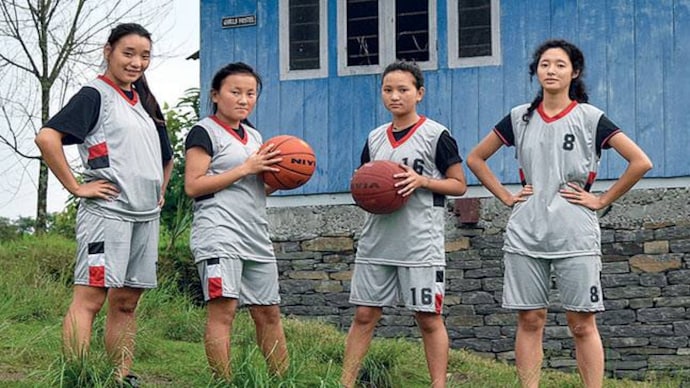Gift of empowerment
Nima Doma Lepcha, star of the winning basketball team from Gangyap, Sikkim, on overcoming hurdles and clinching success.

A seven-hour bumpy drive from Gangtok takes you to Gangyap, a remote village in Sikkim and home to Eklavya Model Residential School (EMRS). Built in 2007 by the Ministry of Tribal Affairs, it is a higher education institute for scheduled tribes children. A team of girls, who had no idea what basketball was went on to win the CBSE National Basketball Championship in 2011; Nima Doma Lepcha, three times Nationals most valuable player tells their story.
I decided to join EMRS because I thought of it as an escape route and was contemplating dropping out of the government school I was in. EMRS was a makeshift one-storey building with a few scattered desks and benches, a couple of blackboards, a box of chalk and 52 confused children. The Principal, Siddharth Yonzone, assured us that the school would eventually be a better place. At EMRS, we slowly evolved and learned to value our lives; Basketball was one of the greatest lessons.
One day, after school, Yonzone sir introduced us to the game; he brought an orange-coloured ball and asked us to dribble it. We fell in love with the game and started exercising on a mud court with no real game kit. We were so engrossed in learning the nuances that not once did we feel deprived. After a few months, we played our first game in borrowed kits against a private school and surprisingly ended up winning it. With back to back wins at state level, we realised we were ready for a bigger stage.

In 2010, we became the CBSE north-east regional champions in Guwahati and headed to Chhattisgarh for the Nationals. Two easy games were followed by a critical reality check. We were pitted against Haryana's tall, robust and tough girls. During the game, I was pushed by one of the players and cracked my scapula. We lost the next game to Chhattisgarh and returned home emptyhanded and disappointed. This experience was an eye-opener. From then on, winning the Nationals was our only goal. After 12 months of intense practice, the now mentally strong team headed to Chennai in 2011. Once again, we were put in the same pool as Haryana and Chhattisgarh.
With a significant margin of about 30 points and truckloads of sincerity, we won our first Nationals. From 2010 to 2013, we won two Nationals but were still practicing on a make-do court. Our achievements got noticed and we received some donation. From chipping stones with hammers to carrying construction material, we built ourselves a conventional basketball court.
If destiny hadn't brought us to EMRS, most of us would have become daily wage labourers or probably would have married early. With the world finally looking at women empowerment from a fresh perspective, we hope our story inspires girls to take up sports in order to liberate themselves.
As told to Mridu Rai